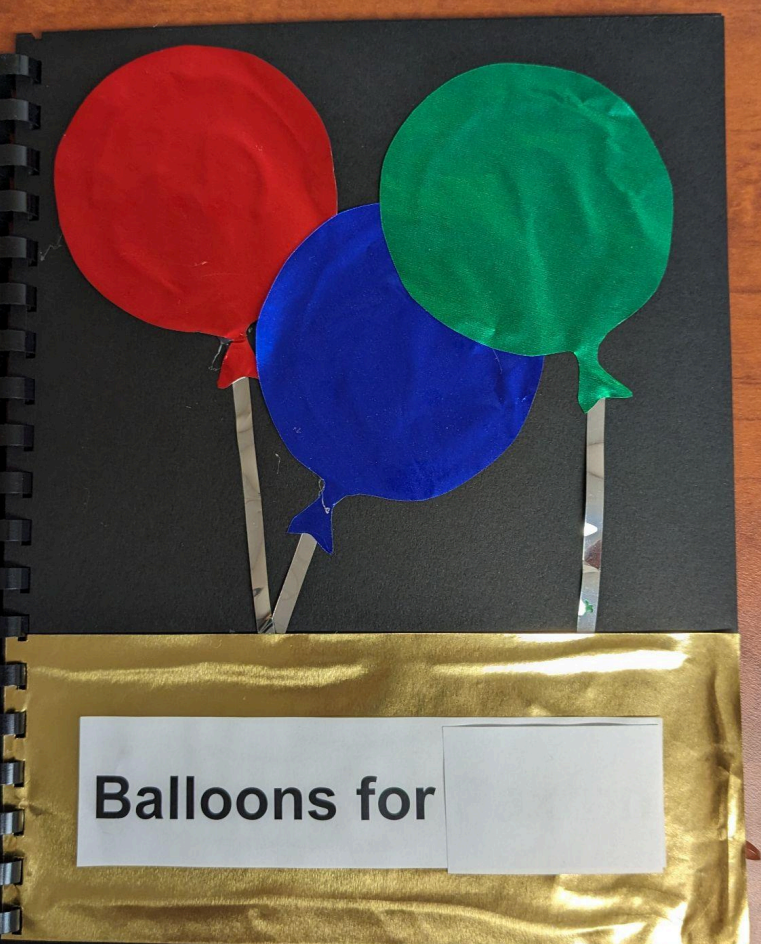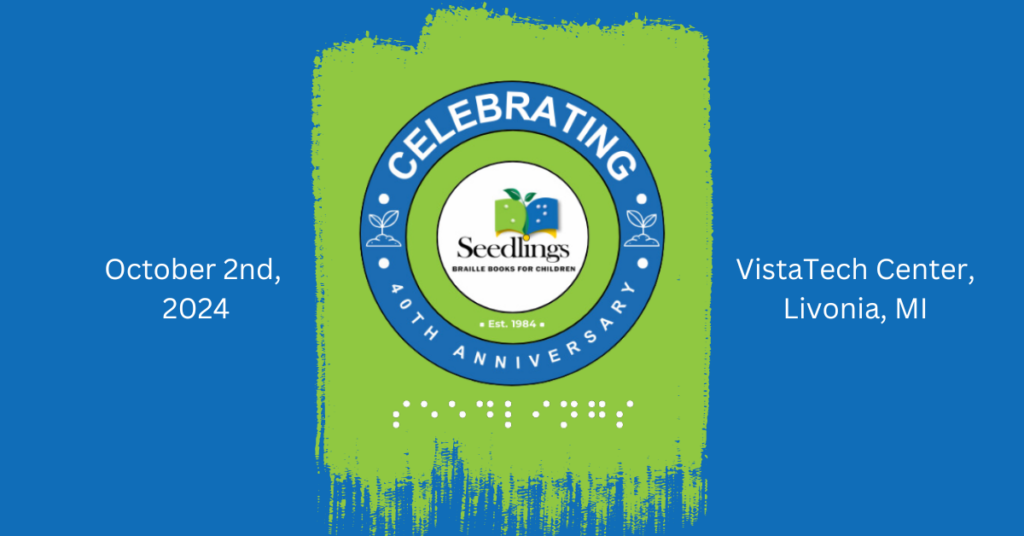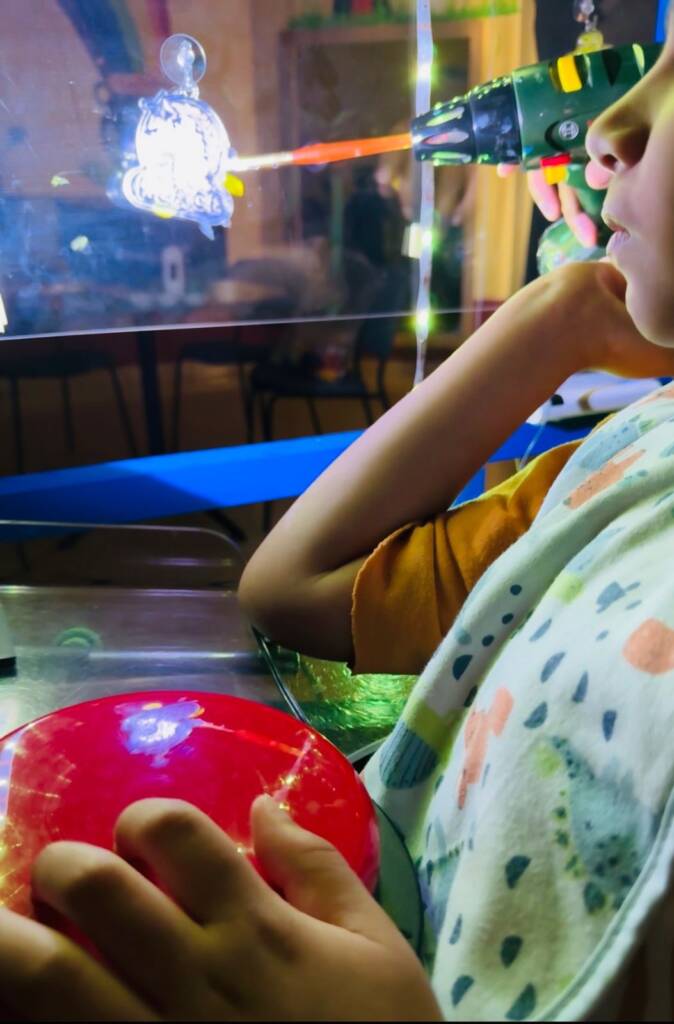What is an Experience Book?
Experience books incorporate real objects or artifacts from an activity or event in which the child has participated to create a book recording and telling about the event. They have both print and braille, and can be made with sturdy cardboard pages in a three-ring binder. Ideally the child participates actively in the whole process, from deciding on the topic for the book, helping to collect and gather the items to illustrate it, telling the story, and putting it all together.
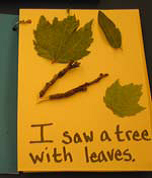
What should the book be about?
An experience book can be on any topic that is interesting and meaningful to the child. It could be about a special event, such as a birthday party or trip to a restaurant, or it could be about something that occurs regularly in the child’s school day, such as cooking class or gym. Books can also be made about routines at home, such as bath time.
How do I make an experience book?
Invite the student to participate as fully as possible in each step of the process.
- Select a topic.
- Once a topic has been selected, collect artifacts during an activity. This can be naturally occurring, such as during a visit to a restaurant, save a straw to recall the milkshake, a coin similar to the one used to pay, etc. Another approach is to collect items with the specific purpose of creating a book, such as a book about “The Playground” in which a piece of bark from a tree, blade of grass, etc. are gathered and brought back to the classroom.
- Be sure that the objects chosen are meaningful to the student! They should be items that the student has manipulated as part of the actual experience, rather than miniatures or symbols that may not have meaning to the child.
- Use sturdy cardboard or any backing that will be strong enough to hold the items. Small bags or boxes can also be used.
- Attach the items to the backing using glue or any adhesive, or place them inside a baggie or tub.
- Use metal rings in a three-ring binder, if creating a book, or any other format that allows the student to be as independent as possible.
- Have the student tell about the experience and include this narration (with help, as needed) in print and braille on each page.
- Keep the book where the student can find it independently. Encourage him or her to share it with classmates or to take it home to share with family members.
Experience stories, tactile books, and object books all provide an entrance to the world of literacy, using concrete materials relating to the child’s own life. In general the language used is simple and based on key vocabulary within the child’s own experience. Pages usually have braille, print, and real objects or partial objects attached to each page. It is often helpful to use a three-ring binder, as pages tend to be thick.
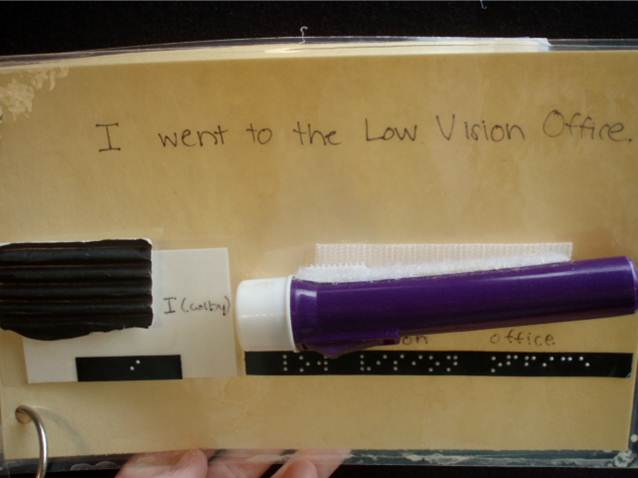
Tips for making tactile books:
- When choosing tactile items to attach to a page, be sure to think about it from the child’s perspective. For a child with limited vision and other disabilities, it is important to select real items or pieces of items that a child has touched as part of the experience. In other words, a raised line drawing to represent a tree is less meaningful than a piece of bark. Cotton balls do not represent clouds to a child who is blind, but rather leaves or a handful of grass may be a better way to represent being outside. Similarly, a matchbox car is visually similar to a real car, but will have no meaning to a child who is blind with additional disabilities. A better way to represent a car may be the buckle of a seat belt or part of a car seat.
- Include print and braille on every page, even if the child is totally blind. This is important for other people who are reading the book, and will help to give the child continued exposure.
- Have the child participate as much as possible in the creation of the book, including choosing the topic, telling the story, selecting the items to “illustrate” it, and attaching the items to the pages.
For more information, see also Experience Books from Washington Sensory Disabilities Services with specific directions on how to create your own Experience Book: Experience Book Directions
Where can I get more information about experience books?
To learn more about Experience Stories, see Experience Books from Washington Sensory Disabilities Services. This site includes videos, FAQ, and suggestions on how to make experience books.
Experience Stories for Functionally Blind Pre-readers by Millie Smith (TSBVI) explains the steps in creating an experience story.
Creating and Using Tactile Experience Books for Young Children With Visual Impairments
By Sandra Lewis, Associate Professor and Coordinator, Program in Visual Impairment, College of Education, Florida State University, and Joan Tolla, Orientation and Mobility Specialist, Tift and Irwin County Schools, Georgia.
This article begins by exploring the literacy needs of children with visual impairments, and describes the steps in creating a tactile experience book. It includes numerous examples of specific tactile experience books, and discusses benefits and cautions using this type of book.
Teaching Emergent Literacy Skills To Kindergarten Students in a Braille/Print Program
Presented by Duncan McGregor, Ed.D. & Carol Farrenkopf, Ed.D. at the AER 2002 International Conference, Toronto, Ontario, Canada
This article includes general strategies for building the foundation for literacy, as well as suggestions for creating books.

